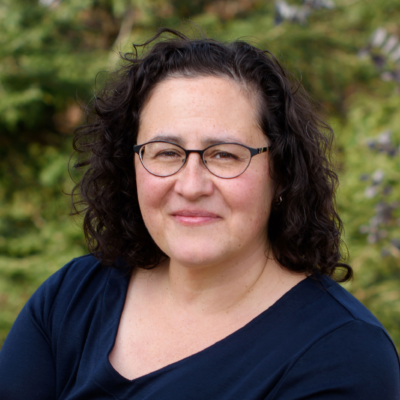How Grantmakers Can (and Should) Get Started with Research

Now is an important time for small and mid-sized foundations to engage in research activities. Institutional foundations are fighting to preserve “big” data, medical research, academic structures, and fill in some of the gaping holes caused by government realignment. Lean funders are aptly positioned to lead through these challenging times because they have strong connections to their community and have the flexibility to adapt to changing needs.
Entering or expanding research activities does not have to be daunting, cumbersome, or even expensive. The key to effectiveness and efficiency for lean funders is to start with the processes and data linked to your grantmaking and target research investment based on what you find in your own data.
Steps for targeting research:
- Re-frame research activities as knowledge building.
- Align knowledge building methods closely with your grant focus and approach.
- Map out the data and processes that are core to your philanthropy.
- Embrace the power of co-leading knowledge efforts with engaged scholars.
Re-frame Research Activity as Knowledge Building
Rigorous research used to be a cloaked activity. It was conducted by credentialed mystics, using encoded methods, and shrouded in secrecy behind ivory tower halls. It was communicated only within secluded communities and in mysterious languages. Fortunately, this is no longer the case. The philanthropic sector is now realizing that the core of any research process is knowledge building, which is essentially about making meaning together. It is now common to hear about participatory, action, and community-engaged approaches where various steps in the research process include participants with lived experience with the topic.
The quality of any research, or its rigor, is no longer established through mystery and mystical methods. You establish rigor by being intentional, systematic, and transparent in your process and methods. Trustworthiness of research means that you have answered questions about who is involved in making design decisions, how you are holding your organization accountable to specific steps, and what concepts and frameworks you are using to interpret your data.
Practice Note:
My first senior-level philanthropy position was in a family foundation that focused on educational change. Their approach was heavily place-based and community engaged. Although they had invested in formal outside evaluation for multiple years, the leadership decided to create one of the first Knowledge Development Officer positions in a foundation.
Reframing for knowledge development increasingly sparked creativity in how methods were aligned with the overall mission. The foundation developed new ways of learning internally and with its board. In some instances, focusing on knowledge development strengthened relationships with grantees and broader stakeholders, deepening their relationship to the foundation and its approach.
Knowledge work, through intentional research methods, increasingly became intertwined with our grantmaking approach, foundation processes, and partnerships.
Align Knowledge Building Methods with Grantmaking Focus and Approach
I was recently asked by a group of grant professionals how I decide where to start with knowledge work. I surprised myself with my answer. Even just a few years ago, I might have said, start with your issue area, such as ending homelessness or improving early childhood education. This time, I said, “I go toward the tensions, and I prioritize relationships.”
Of course, research investments must align with a foundation’s mission and focus area. However, knowledge efforts are most valuable when they are intimately aligned with the why and how of grantmaking. Whatever you call your approach—mission, theory of change, north star, giving plan—research investments are best utilized at the point of tension.
Tensions are not bad. They are just how complexity shows up in the real world. Tensions occur where people have multiple perspectives, shifting priorities, complicated interests, and varied frameworks. Tensions are part of the messiness of grantmaking for change and are a primary entry point for knowledge building.

Practice Note:
I worked with a place-based funder who was deeply committed to integrating capacity building with grantmaking in a whole systems change approach. We didn’t call it a tension at that point, but the major focus that the director identified can be considered the tension.
The research purpose grew out of a desire to make what was invisible visible. The tension was that the deep work of internal reflection, transforming organizational culture, and putting equitable values into practice could be difficult to describe to people who were not inside the practices. This tension became the entry for knowledge building with the specific research methods designed around the initiative’s processes.
Map Out Existing Processes and Data
Grants professionals sometimes say that they don’t know where to begin. You might be given a new “learning” title or be introduced to a specific grantmaking model or lens. A foundation may be transitioning to an updated grants management system or wanting to strengthen impact assessment.
The key is that grants professionals rarely start with a blank page. Research priorities can be surfaced from inside foundation grantmaking.
Surfacing curiosity happens first by looking at existing places where information is collected. Information is not automatically considered data. Datamaking involves a decision to connect information to a question and a way of interpreting. Data can come from a variety of places, including grants applications, reporting, fields in a grants management system, and staff performance protocols.
Mapping for knowledge building also involves identifying grant processes where exchange happens. These processes and spaces become what we call “naturally occurring” opportunities for intentional knowledge building. When I invite groups to engage in data and process exploration, they are often surprised to see how much curiosity is already inside their work.
Practice Note:
I engaged with a team at a nonprofit arts intermediary. The team included the executive director, board chair, marketing staff, and community engagement lead. We worked through a process of identifying the information that was already being collected through program feedback forms and basic tracking of event attendance and membership numbers.
As we mapped out the information, we surfaced both implicit and explicit questions that were hidden in their daily operations. In surfacing the key questions that were guiding the information collection, the group was able to come to shared priorities about the work itself, target data collection, and then lay out what and how they wanted to understand and communicate their work moving forward.
Embrace the Power in Co-Leading Knowledge Efforts
For grants professionals leading knowledge efforts, potential partners include grantees, local communities, and various issue stakeholders. However, if you are looking for a co-lead to support methods design and implementation, you will likely be working with a research scholar.
Research scholars come from all disciplines (sociology, political science, anthropology), fields (education, public health, urban planning), and issue areas (poverty, gender discrimination, youth development). When seeking research methods that are directly connected to grantmaking process and data, scholars who embrace an engaged, participatory, or action orientation are best suited to help maximize foundation knowledge efforts. You can find research scholars with an engaged orientation at many university departments or centers.
If you do not want to interact with the higher education structures, independent scholars are an option for high-quality and flexible knowledge partnerships. All the same considerations apply for finding the right scholar for the desired partnership. However, because they are not bound to university review boards, it is important to find an independent scholar that aligns with your foundation’s values and will adhere to ethical processes.
Practice Note:
Even though I am a research scholar myself, approaching knowledge work from inside philanthropy offered a different vantage point. It was while developing a knowledge strategy to align with grantmaking that I more fully recognized the ways modest foundation investments in research could have an outsized impact through knowledge efforts.
At the same time, a knowledge investment can provide topic research or grant evaluation, inform programming, and build capacity with staff, grantees and broader networks. Knowledge partnerships also serve to support scholars in sustaining a focus on specific issue areas. Inside academia, the support can help with the faculty tenure process, which also serves to sustain topic focus areas over time. Particularly for lean funders, research partnerships focused on a clear knowledge strategy are an exciting and promising way to enhance the value of your grantmaking.
Enhancing the Value of Your Grantmaking
I believe that philanthropic legacy is not only what you do, but also what you make possible. Knowledge building is central to creating possibilities. Whether you are a legacy foundation, a multi-issue grantmaker, or a place-based funder, small and mid-sized foundations have an opportunity to embrace research methods in ways that help to tighten internal operations, strengthen grantmaking, and develop capacity and networks that enact social change. A targeted and manageable knowledge strategy is core to harness research methods that increase the value of your grantmaking.
Learn more about how to turn your data into knowledge assets by checking out the webinar, The Hidden Value in Grantmaking: How Data and Process Can Become Knowledge Assets.

